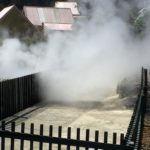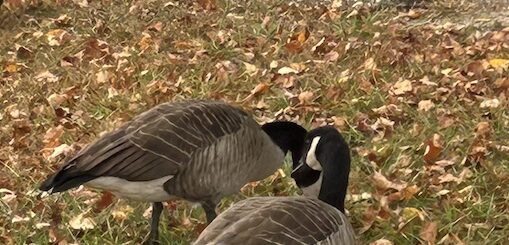Tauranga (Rotorua) New Zealand
Tauranga (Rotorua), New Zealand
When we got up in the morning, we had already arrived at Tauranga, our first port of call. The name Tauranga in Maori means “Sheltered Anchorage”. We got ready and went for breakfast to Lido (a huge self-service dining area with variety of food stalls from all over the world) on deck 9. It was mobbed and we had difficulty finding a place to sit. There was so much choice that it seemed like a very difficult choice. Still we manged a good breakfast. After breakfast we went out to meet Gayleen, and Lou, who offered to pick us up and take us around in the time allowed. We had met them in Barbados while on vacation. We told them about our then upcoming cruise to New Zealand and they kindly offered to meet and take us around. When we disembarked, they were already waiting for us. They are an amazing couple. They dedicated their precious time taking us around to places that we never ever would have been able to visit, see, or even know about. They showed and educated us about Maori culture. We couldn’t have found better people to educate us about Maori culture, as they did because of their Maoris roots. They took us to important places like Rotorua, which is known for its Maori culture. Among its fascinating attractions are its shooting geysers, bubbling mud pools, and natural hot springs. While driving we noticed that there was a faint scent of sulphur a reminder that Rotorua is part of a volcanic zone.
- Steaming Guysers in Rotorua
- Bubbling Mud Baths
It was interesting to see the thermal pools and even more so to see them used for cooking by the people living there. Our next stop was in Whakarewarewa, the area which is inhabited by native Maori, for an authentic experience, which no tour could have provided. We saw that they wrapped the food in foil which was cooked in a Hangi. Hangi is a Maori oven which is simply a pit dug in the ground. Traditionally food was wrapped in leaves, but they wrapped it in foil before placing in wire baskets. These wire baskets are placed over hot stones at the bottom of hangi. Then they were covered with wet sackcloth before putting mounds of earth on top to trap the heat for the food to cook for 3 or 4 hours in one of those thermal cookers made of earth and stones. It was an interesting reminder that underground stoves are also widely used in Middle eastern countries where a whole lamb is roasted in underground pit while it is wrapped first in leaves and then in a tight bundle with a sackcloth which is then placed in a pit stove for several hours, before it is removed to cut and serve. It is called Mandi. Mandi meat falls off the bones and is utterly delicious.
Hangi is not the only way Maoris cook the food. Where we were standing the hot geysers were all aound us. They had make shift rods extending into the heat and steam coming out of the bubbling mud baths and geysers. On these rods there were attached hooks. When they wanted to cook something, it was wrapped tightly in a cheesecloth bundle leaving an extension long enough to hang it down from a hook on the rod to cook the food with thermal energy. To show us how the process worked they wrapped some corn in a cheesecloth and hung it on one of those hooks to cook in the thermal heat. Cooked corn then was transferred to a plastic bag and tossed with salt and butter for us to enjoy the supernal taste. In the very spot some people were cooking vegetables, and some others were preparing food wrapped in cheesecloth bundles by hanging it on to the available hooks in a bubbling hot bath.
Gayleen and Lou also took us to see silver fern which is endemic to New Zealand. The unique feature of these ferns is that the leaves were green on top with a silver underside. Its sprouting new fronds curled into a spiral called koru. For Maoris, it is a symbol of new life and appears in all their art, carvings and tattoos. In Maori art, greenstone koru is a symbol of creation. Because of its circular shape it conveys the idea of perpetual movement. In one of the stores, they had pendants in koru’s spiral shape representing unfurling fern frond symbolizing new life, growth, strength and peace. The sprouting frond made me think of a curled fetus in mother’s womb. Just like a baby, beautiful curled sprouting frond unwinds as it grows and matures.
- Sprouting New Frond
- Lou Bidois, and sons in Rotorua, New Zealand
- Slver Fern on black sweat shirt,and koru pendant
- Rotorua, Bay of Plenty
The final treat for us with Lou and Gayleen before we went back to the ship was a visit to Lou’s mother, Zohra, who lives in a beautiful cottage on Lake Rotorua, in the region of Bay of Plenty. She invited us for lunch she made with her niece. The interesting part was that it was an Indian meal. A delicious chicken, and potato curry, roti, and rice. And for dessert we had golden Kiwifruit with ice cream. But these kiwis were pink inside instead of green as we know it, a big surprise! They said that the pink kiwi only grows in New Zealand. (Great lady, thank you Zohra).
(Apparently kiwi fruits were originally called gooseberries, an edible berry native to China. They made their way into New Zealand where they were grown commercially for export. The name kiwi was given because of fruit’s fuzzy appearance and skin color that is similar to the feathers of kiwi bird, New Zealand’s national symbol. But that is just one story, there are various other explanations is to how and why the name came about).
We really enjoyed our lunch while sitting on the porch where the table was set at a stone’s throw from the Lake Rotorua. The luxurious view, of the shimmering lake where anglers were walking around in the shallow part of the lake to catch fish, was incredible. Ultimate ambience, ultimate meal, and company provided to us by friends who made us feel like one of their own. I felt really grateful that we met them and were able to experience this phenomenal journey of sights and insights made possible by this special couple. After some relaxation and getting to know each other, our hosts, Lou and Gayleen, took us back to the ship.We sailed away from Tauranga and arrived at our next port of call, Napier, NZ.



















Tauranga or Rotorua,the place in New Zealand which may be I would have never heard of has been described so well by you that it looked very familiar.
I felt as if I’m walking around these shootings geysers and bubbling mud pools.By reading your blog,I can understand how traveling enhances your your understanding and knowledge about different cultures and places.
Keep it up these interesting pieces of writing.
Thank you Furrukh.